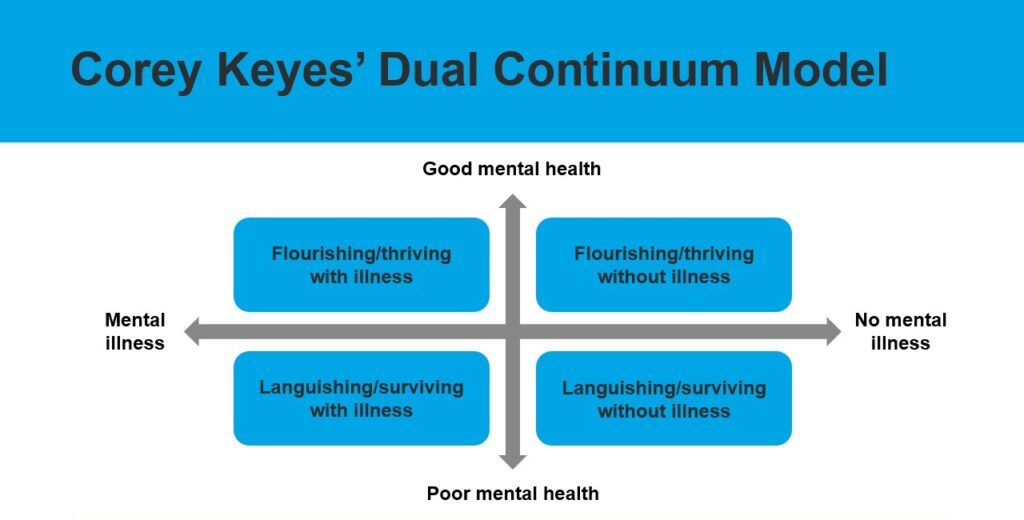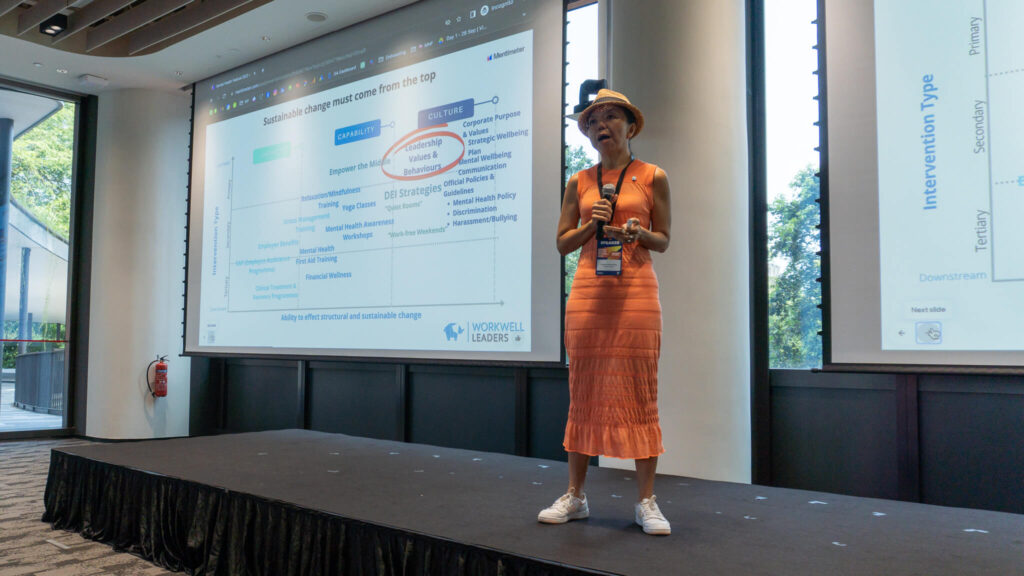Mental health is a complex facet of human existence; so much of it is shaped by our unique biological, psychological, and social factors. And when hundreds or thousands of individuals come together in the workplace, taking care of workplace wellbeing can be a mounting task for people and company leaders.
“As an ecosystem, we should all still be embracing diversity. We can never, ever stop doing that,” asserts Anthea Ong, former Nominated Member of Parliament and Chair of the Board of Directors for WorkWell Leaders.
For years, Ong, a staunch advocate of wellbeing, has been challenging the perceptions of mental health at an individual and systemic level. At Intellect’s Mental Health Festival 2023, she shared three mindset shifts organisations need to make meaningful strides in workplace wellbeing.
Watch the session here:
Employee wellbeing transcends diagnoses
Prevention is better than cure – this applies to mental wellness as much as physical health.
According to Ong, almost 70% of the resident population in Singapore is in the workforce, and they spend most of their waking hours working. The correlation between our working environment and mental health isn’t rocket science. In fact, a study revealed that managers have just as much influence over our wellbeing as our partners. The sooner organisations acknowledge this reality, the sooner our work on workplace wellbeing can begin.
We’re accustomed to think of mental health in terms of pathology. But according to the Dual Continuum Model by Corey Keyes, the absence of a mental health illness does not necessarily mean an individual has positive mental health. The reverse is true; you may feel out of it at times without being mentally ill.

“You can be languishing without a mental illness and you can be flourishing with an underlying illness,” Ong summarised. As a result, your workplace wellbeing strategy needs to account for all employees, whether they are struggling, surviving, or thriving.
The economy and businesses have a lot to lose by neglecting this reality. Duke-NUS Medical School and the Institute of Mental Health reported that symptoms of anxiety and depression alone can cost the country S$16 billion a year. That accounts for roughly 2.9% of our nation’s Gross Domestic Product (GDP).
This trickles down to organisations, which are essentially microcosms of society. According to a 2022 KellyOCG Global Workforce study, 80% of senior leaders in Singapore are thinking of leaving their roles in the next two years.
“The silver lining of COVID is that there’s now a huge confluence of research and studies on mental wellbeing and a lot of changes happening from all the stakeholders to pressure leaders and employers and organisations to do more. We now know that if you’re not looking at mental health as an employer, you’re not going to be the employer of choice. Not in today’s world,” Ong concluded.

Workplace wellbeing is a business strategy
“What if mental health isn’t just an HR benefit problem but a strategy issue? We really cannot solve a problem with the same way of thinking that created it in the first place,” Ong stressed.
Unfortunately, many organisations have a reactive approach to mental health that inevitably leads to burnout among HR professionals. Ong likened it to the parable of the river, where a group of villagers spotted and rushed to rescue babies that were floating on the river downstream. They did their best to save as many babies as they could until they felt too exhausted to keep going.
“A lot of you in HR [human resources] have been trying to save the babies in the river, but we really need to have a larger conversation about what’s further upstream. It’s no longer individuals we need to look at, but systems,” Ong said. “Why are these babies being chucked down the river?”
When leaders embed workplace wellbeing in daily work life and the organisation’s DNA, they reap the rewards in terms of employee engagement and retention.
“In terms of business outcomes, some of our members have reported the lowest attrition rates when they look at mental health as a business strategy. Some have invested as much as 10%, 15% of their revenue into their mental wellbeing efforts,” Ong said.
The bottom line has much to gain, too. Anthea shared that every S$1 invested in workplace wellbeing yields a remarkable return of S$5, according to the National Council of Social Service (NCSS). Another study in the states revealed that companies in New York saw their stock prices double or even triple when they made substantial investments in mental health.
How an organisation integrates workplace wellbeing into their business strategy will vary. But the National University of Singapore (NUS), as a member of Workwell Leaders, has shared its framework for putting intentions into actions.

Be well to lead well
“It takes an entire community to work on culture. Leaders have an outsized role and influence on that,” Ong said.
That sustainable change must start at the top isn’t news, but frameworks and policies can only get you so far. Crucially, whether leaders feel, think, and act congruently speaks volumes about the organisation’s priorities.
To become a champion of mental wellbeing, leaders need to be well to lead well. There are four values that leaders can embody to lead their teams better: Courage, compassion, commitment, and clarity.
- Courage: This involves leading by example and upholding your values. When employees witness acts of courage in the workplace, like their leaders admitting to mistakes or speaking up against injustice, positive outcomes extend to individuals, teams, and the entire organisation.
- Compassion: This involves empathising with employees and empowering them to navigate the demands of their work and personal lives. That said, compassion doesn’t mean you never make difficult or even unpopular decisions. You may not be able to keep a team member whose conduct is deteriorating, but you can still support them during their outgoing transition.
- Commitment: This involves walking the talk and setting a powerful example for all. Visibly prioritising mental health may look like utilising mental health days, refraining from sending work-related messages while you’re away, and participating in the wellbeing programs HR has planned.
- Clarity: This involves communicating transparently but calmly to cultivate psychological safety in the workplace. It’s worth noting that psychological safety and accountability aren’t mutually exclusive; learn more about striking that balance here.

“Mental health is a complex issue, and the solutions and strategies are still evolving. It’s important to create a safe space or community for leaders—for them to know that they won’t be charged or cancelled when they come together to discuss and lead well,” Ong said.
It’s lonely at the top and, sometimes, leaders can feel like we expect the world of them. This is why it’s important for HR, line managers, and employees to extend the same courage, compassion, commitment, and clarity to them as they would one another.
“We can continue to demonise leaders and employers, but really, we’re all in the same river. Being a leader can be lonely. Giving them peer support is really important.”








